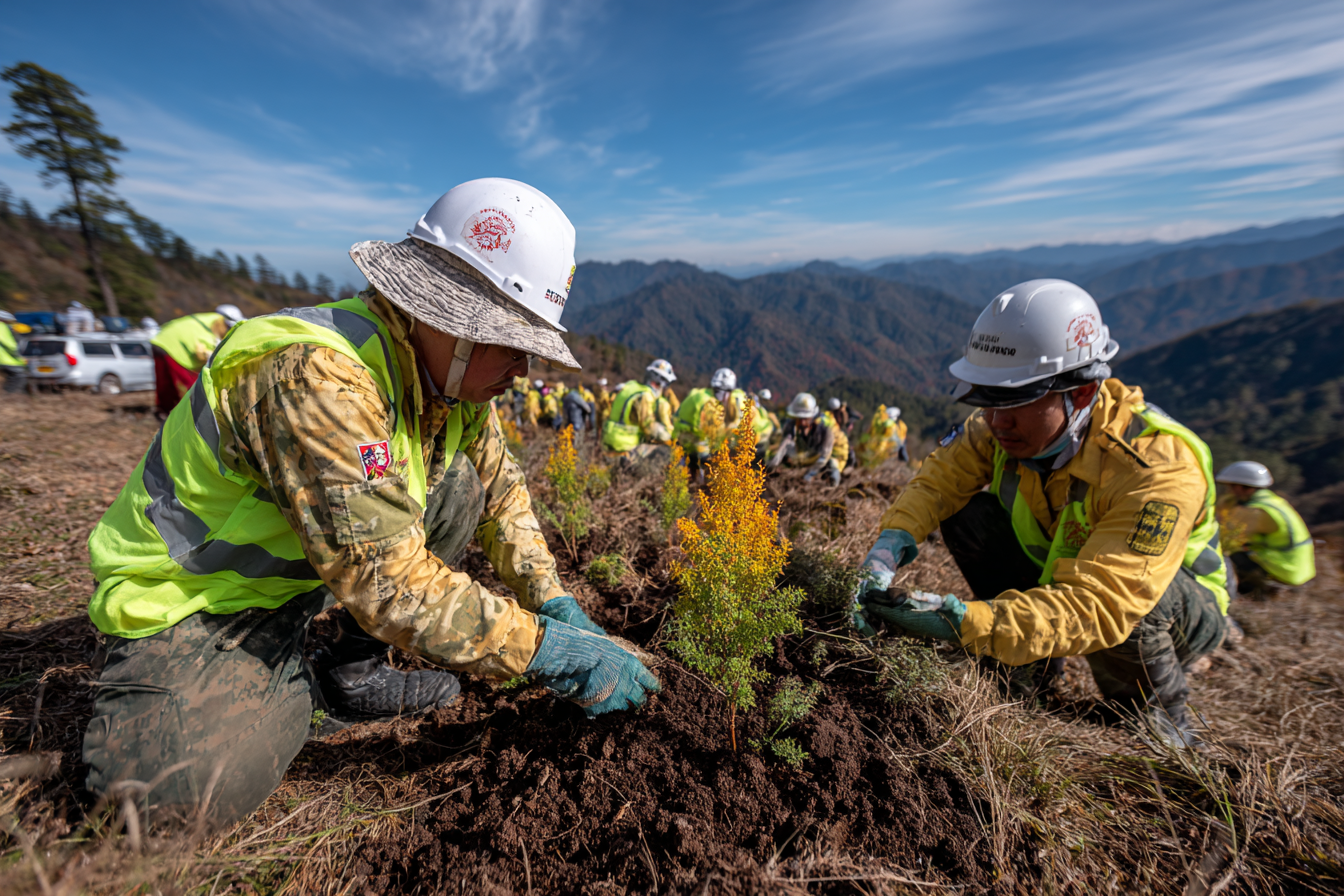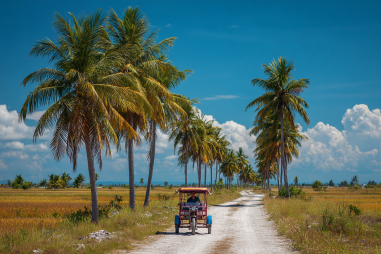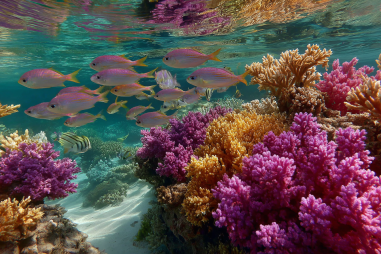Sagada, nestled in the mountainous region of the Philippines, is renowned for its breathtaking landscapes, unique cultural heritage, and pristine environment. As more travelers discover this hidden gem, the importance of preserving its natural beauty becomes increasingly vital. Supporting Sagada’s environmental conservation efforts not only ensures the protection of its ecosystems but also sustains the community’s traditional way of life and promotes responsible tourism. In this article, we will explore why conservation in Sagada matters, the challenges it faces, and how visitors can actively participate in preserving this paradise for future generations.
The Importance of Conservation in Sagada
The natural environment of Sagada is a treasure trove of biodiversity, featuring rich forest cover, unique flora and fauna, and remarkable limestone formations. Its clean rivers, caves, and terraced rice fields provide a vital foundation for the local communities’ livelihood, culture, and spiritual practices. Conservation is crucial here because it helps maintain ecological balance, protects freshwater sources, and preserves the integrity of cultural landmarks that are deeply connected to the environment.
Moreover, sustaining Sagada’s ecosystem is essential for climate resilience. The mountainous forests play a key role in carbon sequestration and serve as buffers against natural disasters like landslides and floods. By protecting these natural resources, conservation efforts also help secure the community’s economic future by bolstering ecotourism, which has become one of the main drivers of Sagada’s development.
Current Environmental Challenges
Despite its natural beauty, Sagada faces a number of environmental challenges. Increasing tourism has led to more waste generation, pressure on natural sites, and disturbances to wildlife habitats. Plastic pollution, in particular, has become a significant issue, with non-biodegradable waste found along hiking trails and inside caves. Additionally, illegal logging and unsustainable agricultural practices have threatened forest cover and soil integrity in some areas.
Unregulated development and infrastructure projects also pose risks to the landscape and cultural sites. The rising influx of visitors sometimes strains local facilities, affecting water supply and sanitation, which can have detrimental effects on surrounding ecosystems. These threats highlight the need for coordinated conservation initiatives that balance tourism, community needs, and environmental health.
Local Organizations and Projects
Sagada benefits from several local organizations committed to environmental conservation. One of the noted groups is the Sagada Ecotourism Coordinating Council (SECC), which works closely with the community and government agencies to promote sustainable tourism and environmental protection. The SECC actively monitors visitor impact, encourages eco-friendly practices, and conducts environmental education sessions for locals and tourists alike.
Another important player is the Sagada Heritage Conservation Group, focused on preserving cultural sites and natural habitats. These organizations often collaborate to implement projects such as tree planting drives, river clean-ups, and waste management initiatives. For example, community-based tree nurseries contribute saplings to reforestation efforts, while volunteer programs engage tourists in hands-on conservation activities, fostering a sense of stewardship.
Eco-Friendly Travel Practices
Travelers visiting Sagada can significantly reduce their environmental footprint by adopting simple yet effective eco-friendly practices:
- Minimize waste: Bring reusable water bottles, bags, and containers to avoid single-use plastics.
- Proper waste disposal: Use designated waste bins and participate in cleanup drives where available.
- Respect wildlife and habitats: Observe animals from a distance and avoid damaging plants or disturbing cave formations.
- Stay on marked trails: This helps prevent soil erosion and protects sensitive vegetation.
- Choose sustainable accommodations: Support guesthouses and lodges that employ green practices such as solar energy, water conservation, and waste reduction.
- Conserve water and energy: Use water sparingly and switch off lights and air conditioning when not in use.
By practicing responsible travel, visitors contribute to the long-term preservation of Sagada’s environment and enrich their travel experience with meaningful connections to nature and community.
How Tourists Can Get Involved
Beyond mindful travel, tourists can actively engage in conservation efforts through various opportunities that allow them to give back directly. Many local groups welcome volunteers for projects such as:
- Participating in reforestation and tree-planting activities.
- Joining community clean-up events along trails, rivers, and caves.
- Contributing to awareness campaigns that promote sustainable practices.
- Supporting cultural preservation efforts, including funding or partaking in traditional craft workshops and festivals.
Some tour operators offer eco-tours that integrate environmental education and volunteering, providing travelers with hands-on opportunities to make a positive impact. This approach not only helps conserve the environment but also fosters intercultural exchange and strengthens local economies.
Sustainable Tourism Initiatives
Sagada has embraced sustainable tourism principles to harmonize visitor influx with environmental and cultural preservation. These initiatives focus on responsible development, community participation, and ecological awareness. Key sustainable tourism practices implemented include:
- Limiting the number of visitors: To reduce overcrowding and degradation of sensitive sites, certain caves and trails have visitor caps.
- Community-led tourism: Empowering locals to manage tourism services ensures that benefits flow back to the community and cultural integrity is maintained.
- Environmental education: Informative signage, guided tours, and workshops educate tourists on Sagada’s ecology and responsible behaviors.
- Certification programs: Encouraging businesses and guides to attain environmental and cultural certifications promotes higher standards of practice.
These efforts serve as models for sustainable mountain tourism, contributing to the durability of Sagada’s environment and the well-being of its people.
Case Studies of Successful Efforts
Several success stories showcase how Sagada’s conservation programs have made a tangible difference. For instance, the community-led forest restoration project in barangay Pimutok resulted in the planting of thousands of native trees, improving watershed conditions and creating habitat corridors for local wildlife. This project was driven by local residents with support from NGOs and volunteers, illustrating effective grassroots mobilization.
Another example is the Sagada Ecotourism Circle, a cooperative of local guides and businesses that prioritize environmental protection and cultural preservation. Their efforts have helped reduce waste accumulation and ensured tourists adhere to guidelines, which has minimized ecological damage while maintaining visitor satisfaction. These cases reinforce that collective action and sustainable management are key to overcoming environmental pressures.
Lasting Benefits of Conservation in Sagada
When environmental conservation is a shared priority, the benefits extend well beyond nature itself. For Sagada, preserving its landscapes and traditions strengthens community identity, promotes health and well-being, and secures livelihoods based on sustainable tourism. Protected ecosystems continue to provide clean water, fertile soil, and climate regulation, which are essential for agriculture and daily living.
Moreover, a commitment to conservation elevates Sagada’s reputation as a responsible travel destination, attracting visitors who respect and value its uniqueness. This can lead to more meaningful tourism experiences, greater economic opportunities, and a legacy that future generations will be proud to inherit.
By supporting and participating in Sagada’s environmental conservation efforts, travelers contribute to this immense and ongoing journey — ensuring that the beauty and culture of this mountain paradise remain vibrant for years to come.







